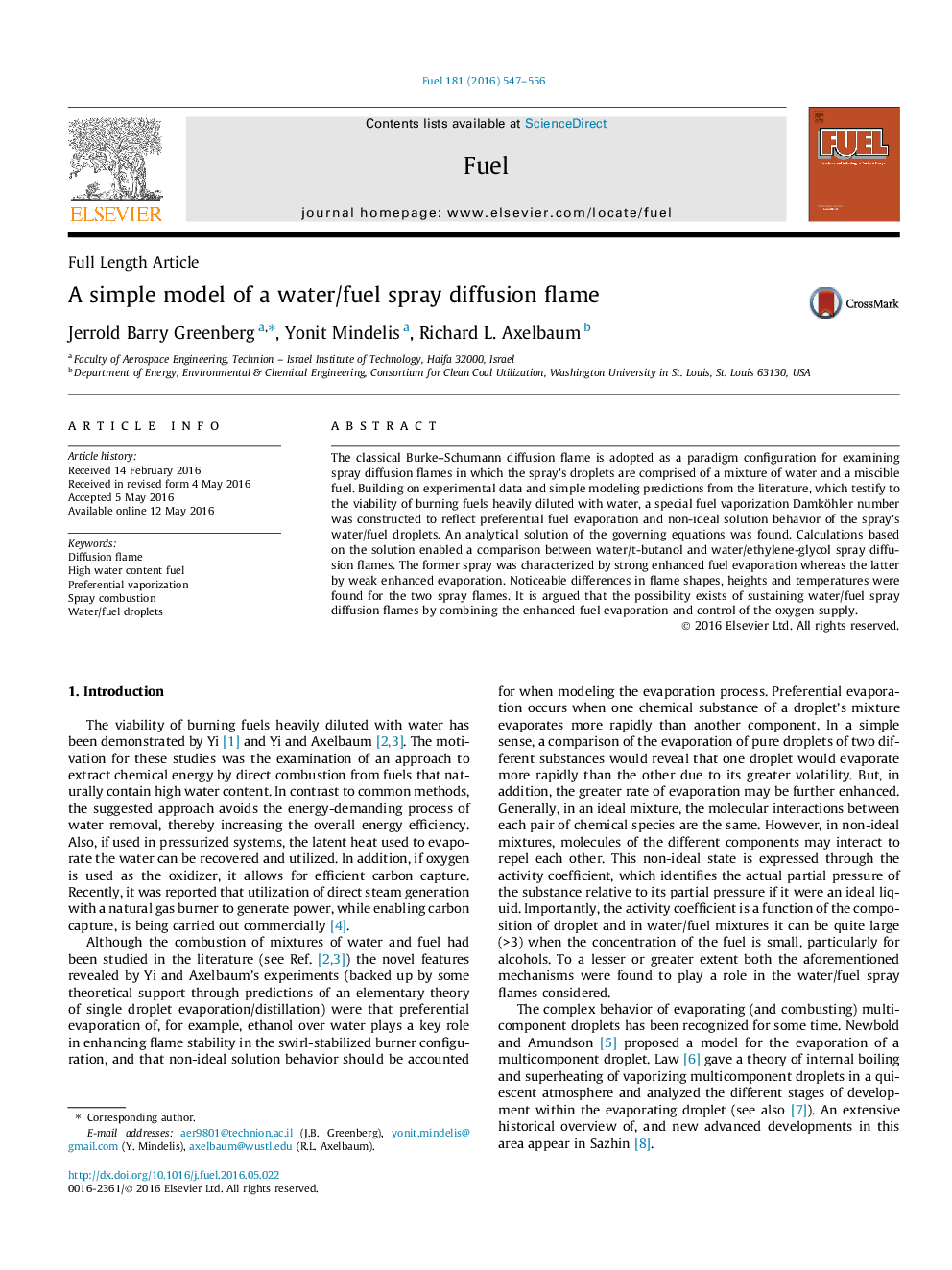| Article ID | Journal | Published Year | Pages | File Type |
|---|---|---|---|---|
| 204942 | Fuel | 2016 | 10 Pages |
The classical Burke–Schumann diffusion flame is adopted as a paradigm configuration for examining spray diffusion flames in which the spray’s droplets are comprised of a mixture of water and a miscible fuel. Building on experimental data and simple modeling predictions from the literature, which testify to the viability of burning fuels heavily diluted with water, a special fuel vaporization Damköhler number was constructed to reflect preferential fuel evaporation and non-ideal solution behavior of the spray’s water/fuel droplets. An analytical solution of the governing equations was found. Calculations based on the solution enabled a comparison between water/t-butanol and water/ethylene-glycol spray diffusion flames. The former spray was characterized by strong enhanced fuel evaporation whereas the latter by weak enhanced evaporation. Noticeable differences in flame shapes, heights and temperatures were found for the two spray flames. It is argued that the possibility exists of sustaining water/fuel spray diffusion flames by combining the enhanced fuel evaporation and control of the oxygen supply.
